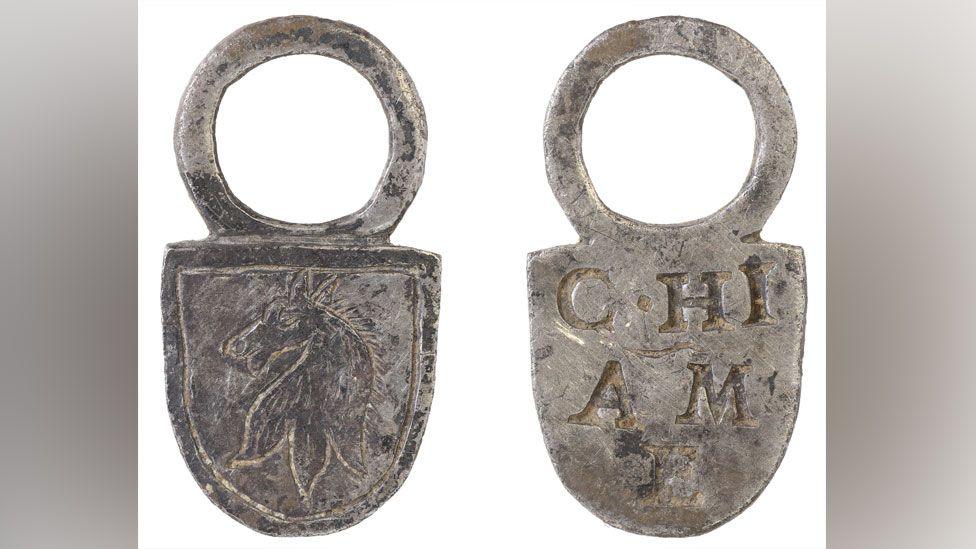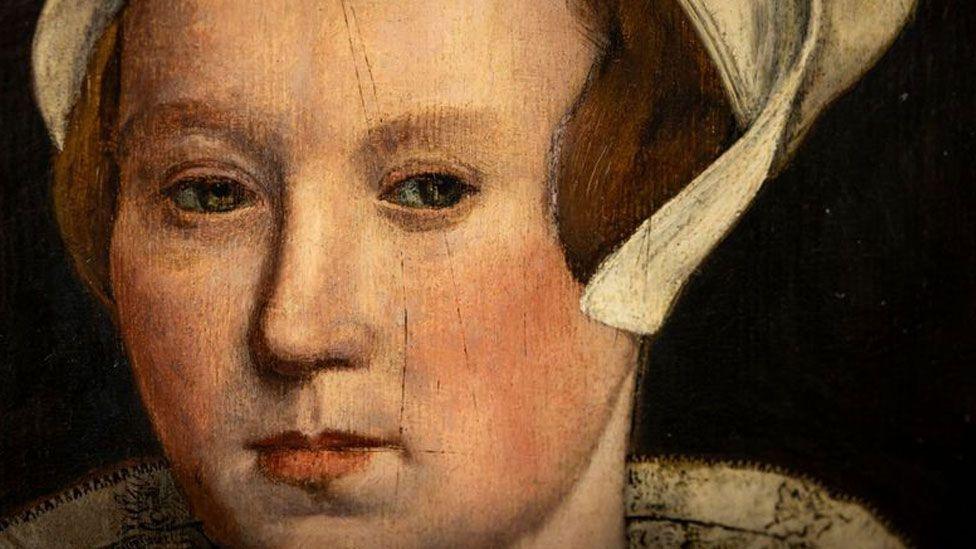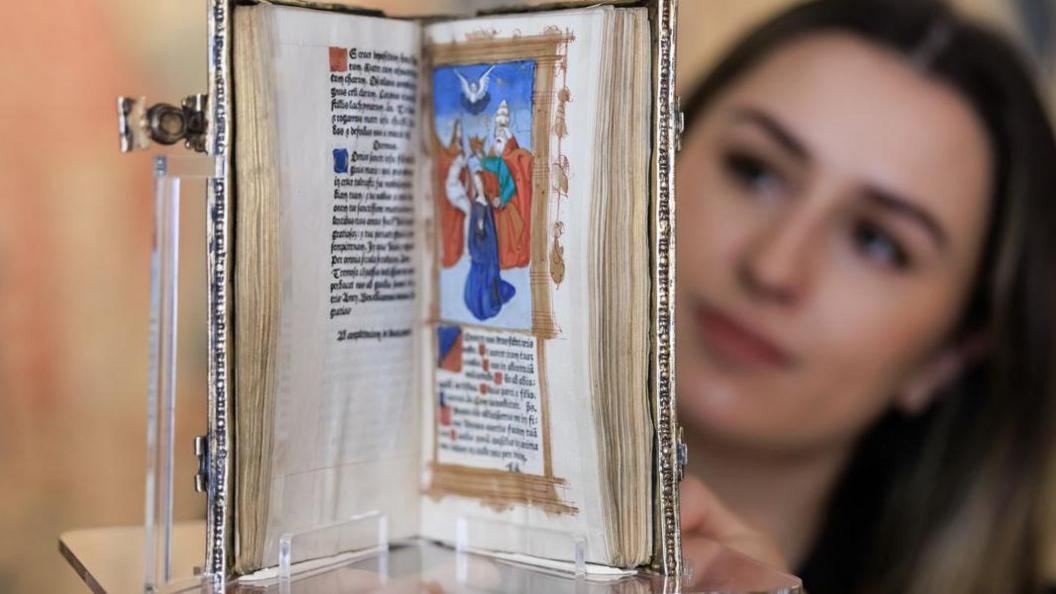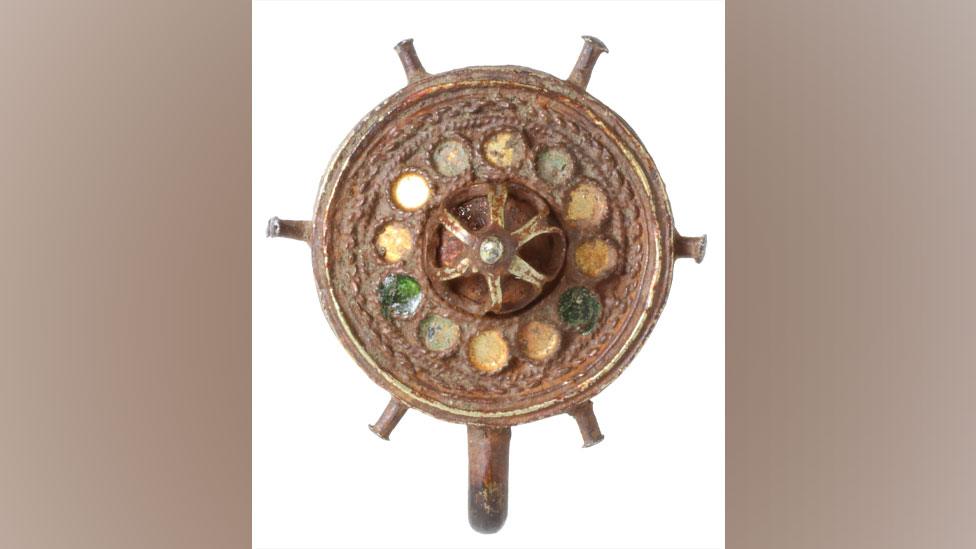Hawk tag find linked to man who burned heretics

Sir Clement Higham appears to have been employed by the crown in Henry VIII's reign, but his rise to national prominence as a privy councillor came under Mary I
- Published
A Tudor-era hawk identity ring owned by a man who persecuted Protestants across East Anglia during Mary I's reign has been found by a metal detectorist.
Sir Clement Higham was a lawyer and landowner from Barrow, Suffolk. During Roman Catholic Mary's reign, Protestants were considered heretics and if they did not recant, they were executed, with many burned at the stake.
Historian Helen Geake said he appeared to have been particularly harsh towards people he saw as heretics in a way that "turns the stomach" today.
The tag - which is known as a vervel - was discovered at Narborough, near Swaffham, Norfolk, where one of his daughters lived after her marriage, she added.

The Suffolk landowner appears to be the owner of this 17.8mm by 8.7mm (0.7in by 0.3in) vervel, which was found near the Norfolk home of one of his daughters
Hunting with hawks was a hugely popular sport for better-off people, from the Middle Ages until the mid-17th Century.
The vervels were used to identify ownership of the birds if they were found dead or had flown off.

Sir Clement married twice and his wives are commemorated with him at his parish church in Barrow, near Bury St Edmunds, after his death in 1571
"It is engraved with the horse head, part of the Higham family's coat of arms, and there is no evidence of any other C Higham in that family at the right time," said Dr Geake, Norfolk's finds liaison officer.
"He could have lost it when he was visiting his daughter - on current roads it's about 40 miles (64km) away from his home near Bury St Edmunds."

It was found close to the home of Sir Clement's daughter Judith, who married Sir John Spelman of Narborough, said Helen Geake
Sir Clement was born in 1495 and lived through years of religious turmoil after Henry VIII's break with Rome in the 1530s.
He was one of many East Anglian gentry who rallied to Mary I's cause at Framlingham Castle, Suffolk, in 1553, external, when there was an attempt to put the Protestant Lady Jane Grey on the throne after Edward VI died.
His reward was to be elected as Speaker of the Commons, to be knighted by Mary's husband Philip of Spain and to become one of the queen's privy councillors.

Bishops Ridley and Latimer were executed under Mary 1 (above). Protestants were considered heretics by because they believed in a different version of Christianity to Roman Catholics
The accounts of his persecution of Protestants are listed by John Foxe in his Book of Martyrs, published after Elizabeth I came to the throne, external in 1558.
These include details of the executions of two women tied together in Ipswich, of a painter from Wisbech, Cambridgeshire, who was burned in Ely, and of a blacksmith from Wattisham, Suffolk.
Dr Geake said: "He does seem to have been a nasty piece of work, but he must have genuinely believed in it all."
The find is the subject of a coroner's inquest and Norwich Castle Museum hope to acquire it.
Get in touch
Do you have a story suggestion for Norfolk?
Follow Norfolk news on BBC Sounds, Facebook, external, Instagram, external and X, external.
Related topics
- Published7 March

- Published8 June 2023

- Published30 September 2023
